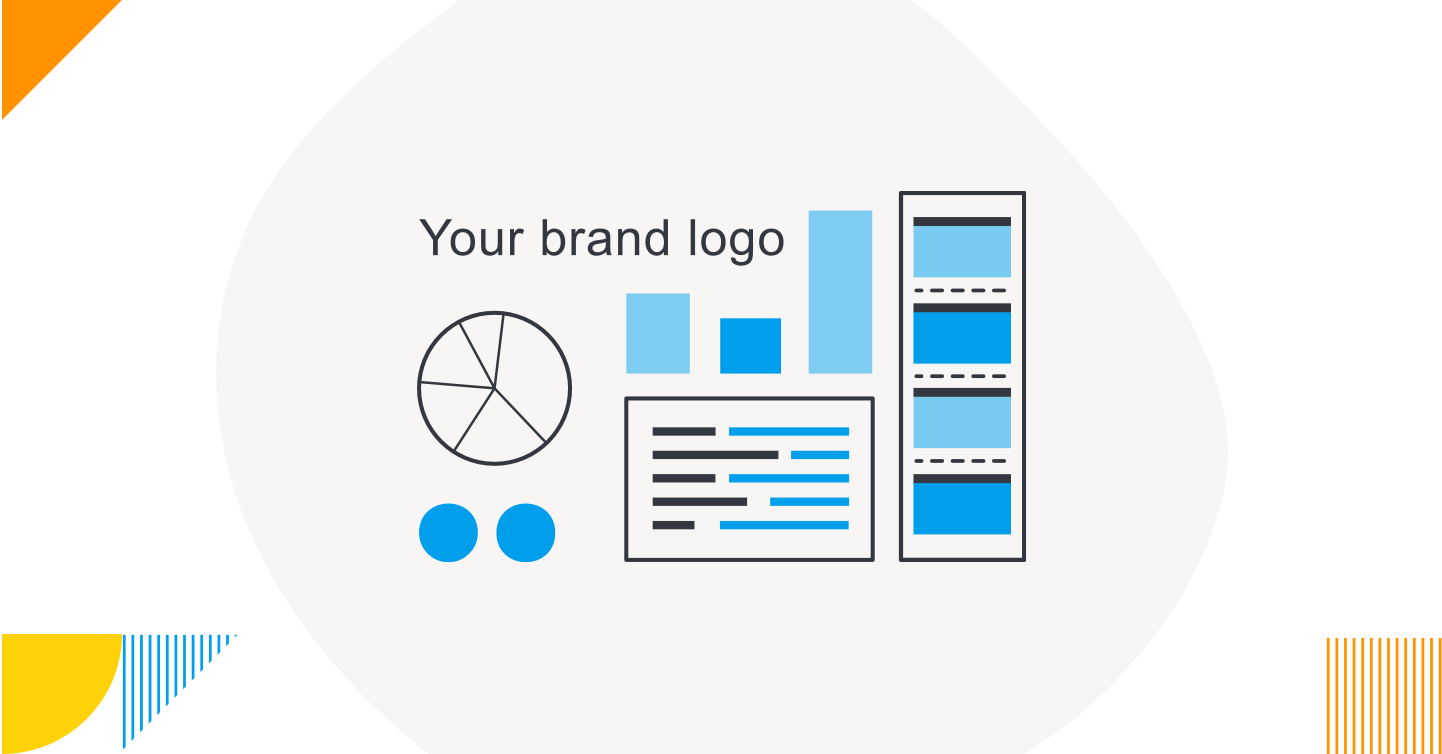
Building a Killer App with White Label BI
Embedded analytics has become a priority for many companies today. It means building data visualizations and business intelligence (BI) features right into public-facing apps.
However, some businesses don't like this idea. They don't want to feature a third-party solution in their first-party applications - leading to a lack of data and analytics used.
So, to cater to this, the best-embedded business intelligence (BI) platforms like Yellowfin support the ability to customize and rebrand the user interface (UI) freely as desired.
These BI tools blend analytics with the company's software and brand identity. This capability is referred to as white label BI. Don't know what white label BI is? Read on.
White Label BI: An explainer
Several BI companies support versions of software that enable businesses to use their own branding. Companies can design dashboards, reports, and other visualizations that fit the customer's branding with this software.
They can also rebrand and restyle visual elements like logos, fonts, colors, buttons, login pages, and menus. It is done without even the slightest hint of a third-party tool.

The process, which involves changing the visual design of a BI tool without changing its core functions, is known as white labeling BI. It is sometimes referred to as white label analytics, custom analytics, or OEM business intelligence.
So, white label BI is an embedded analytics solution that rebrands and customizes to make analytics look similar to the business application. Doing this maintains the same organization feel as other company documents and systems - for consistency.
Benefits of Building with White Label BI
The benefits of white labeling BI is long, but we will include only the top five benefits.
Benefit #1 - Better user experience
The primary benefit of buying a BI platform that supports white labeling is users' seamless and unified experience. White labeling BI brings analytics directly into the user's workflow. So, the analytics are not separately accessed. With this, the users will not even know it is coming from another product.
So, anyone who uses a company's software for their analytics needs will be able to engage with their business data as usual. The engagement will be without any complexity or confusion that may have arisen while using a completely different-looking third-party analytics solution. With logos, colors, portals, and menus being the same as they already know, it will be easier for users to have a pleasing experience.
Furthermore, users can take action on their data from within their regular application workflow. They can do so without having to shift to another tool for context. It is referred to as contextual analytics.
Benefit #2 - Quick entry to market
With a white label BI, any business can buy an established analytics platform from a trusted vendor. It does not have to spend time and resources building it internally with this. So, bringing analytics into your applications becomes a facile process instead of an exhaustive effort. Plus, it reduces the time to get into the market.
Additionally, a business can deliver a proven high-quality analytics experience to its software users faster. The users can also extract the analytic value immediately. Not only this, but white label BI also leverages customers to instantly engage with the latest dashboards, operational reporting features, and data storytelling - with the same branding look and feel.
Benefit #3 - Retain the look of brand
If your brand has a unique look and feels and wants to retain it, white label BI can do the job. With this tool, software experience as the analytics solution can fit the brand's identity. Also, with this embedded solution, the developers are free to focus on innovating upon and improving your core product. This is done with less cost and effort than building analytics in-house.
For instance, Yellowfin's white label analytics supports drag and drop property editors. It also promotes low code environments with pre-set styling and white labeling options, which a team can quickly use to match the brand.
Moreover, with a white label BI solution, custom analytics eliminate all the potential pain points for customers. It allows developers to focus on the product and not on becoming experts in analytics.
Benefit #4 - Less risky partnerships
Brands spend tons of time and resources on maintaining their brand. So, the last thing business owners want is their brand's security breach. If you are such a brand owner and want to keep your brand safe, white label BI tools can help.
Affiliating publicly with another brand or technology poses potential security risks. That is why many business owners do not want to take affiliating publicly. For these businesses, white label and embedded use cases are the answer.
When businesses use smaller and less reputable BI tools, they are at the risk of data breaches.
Thus, white label BI tools are inevitable for businesses worried about keeping their brand safe. So, it is advisable to go with industry-choice BI tools like Yellowfin.
Benefit #5 - Ongoing support for analytics capabilities
Lastly, white label BI provides ongoing professional support for all the analytics capabilities. It frees developers from having to worry about keeping and maintaining the analytics. With this solution, developers can focus more on maintaining customer trust.
With this benefit, business no longer needs to build their software or worry about losing their customers. They also do not need to worry about any technical fault or hindrance as it stands no ground after the ongoing support and help.
White label BI tools also save a lot of costs that would otherwise be used for maintaining the support. But with white label BI, all the internal and external issues are solved as they come.
Once you know the five significant benefits of white label BI and the importance of embedded analytics, you might be wondering why you can't develop an internal tool that does the job and complies with your brand perfectly.
White Label BI vs. developing in-house BI
Building a custom solution will cost more than buying a white label solution.
It becomes especially true when you think about the long-term maintenance and development costs of an in-house solution. Plus, very few companies can afford the time and resources required for building such a tool, and take away from their core processes.
In contrast, industry-leading BI tools are rich in features and pay for themselves when used repeatedly to deliver insight and efficiency. Not only has this, but the white label BI solution also enabled businesses to use the tool's support staff to troubleshoot any issues they encounter.
In short, white label BI is cheaper, more accessible, and much less work than trying to implement an in-house solution.
Looking for best white label BI tool?
Are you a business owner and want to save money and resources on analytics?
Yellowfin embedded analytics is for you. It not only offers more functionality but also provides a better user experience. The cost of it is also less when compared to other embedded analytics. Also, Yellowfin provides a detailed whitepaper to guide its users on how to embed analytics in your app.
Still not convinced? Here are the top reasons that will tell why you should buy Yellowfin's embedded analytics right now:
- Cost to change is minimal
- Significantly reduced effort
- Modernization
- Ongoing project support
- Low price/licensing
- Simplicity and scalability
- White labeling and easy integration
Modernize with the best embedded analytics
If you want the best for your brand’s white labeling, give Yellowfin's embedded analytics a try today.